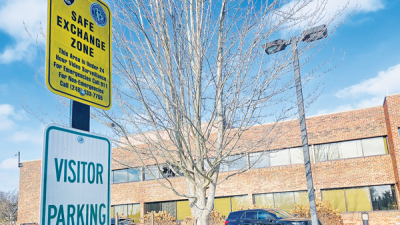METRO DETROIT — School districts statewide will receive more in per-pupil funding during the 2022-2023 school year.
On July 14, Gov. Gretchen Whitmer signed a bipartisan education budget that included a $450 per-pupil increase statewide for public schools for the next school year.
The new budget will provide $9,150 in per-pupil funding per student in the state.
“The budget makes the highest state per-student investment in Michigan history to help schools buy new textbooks, offer more personalized instruction and bolster AP and honors classes. It also bolsters resources for special education, at-risk funding, and career and technical education while expanding slots in free after-school and preschool programs,” Whitmer said in a prepared statement.
“Finally, to improve the on-campus experience, the budget invests a quarter of a billion dollars in school infrastructure to build or renovate everything from classrooms, computer labs and libraries, and significantly expands teacher recruitment programs so we attract and train thousands of educators every year,” Whitmer said. “This budget is proof of what is possible when we put our students first and stay focused on getting things done.”
The education budget is divided into six key sections: students, mental health, learning supports, student safety, school infrastructure and teacher recruitment. The budget also includes additional funding to meet students’ individual needs for special education students and at-risk students.
“We’ve gone from $8,200 (per student) in the last year to $9,150, which is a real commitment to our kids,” Roseville Community Schools Superintendent Mark Blaszkowski said. “It gives us a little bit extra and frees up more general fund dollars for programs.”
Roseville, for example, will receive an increase of $444,000 for mental health resources. Part of the money will be used to add a counselor at Roseville Middle School, for various tools designed to help students better deal with their mental health issues and in other areas.
The state aid increase also will be used to add a police liaison officer to cover both Roseville Middle School and Eastland Middle School. The district already has a police liaison officer at Roseville High School in place.
Blaszkowski pointed out that the increase comes at a time in which supply and food costs have increased in the aftermath of the COVID-19 pandemic. One concern of his is that the increase is just for this upcoming school year.
“That money needs to stay in the budget for multiple years,” Blaszkowski said. If the increase isn’t in the state budget in subsequent years, districts could be looking at making staff and program cuts.
“Any increase to school funding is going to help us out,” Center Line Public Schools Superintendent Joseph Haynes said. “The money we get is for educating our students and maintaining buildings. It’s additional money, but everything is costing more … buying food and equipment for our kids. The governor also increased funding for at-risk students and funding for special education.”
At-risk can include students who come from financially disadvantaged families, have experienced homelessness, or are more likely to fail or drop out of school.
“We will look at the services we are currently offering, and we’ll look at the additional funding we will get. That will help us meet the needs of our at-risk and special education students better.”
That could include adding after-school programs and summer school programs for those students. Hiring more staff also could be an option.
“It will depend on the need and how much money we receive,” Haynes said.
 Publication select ▼
Publication select ▼





















